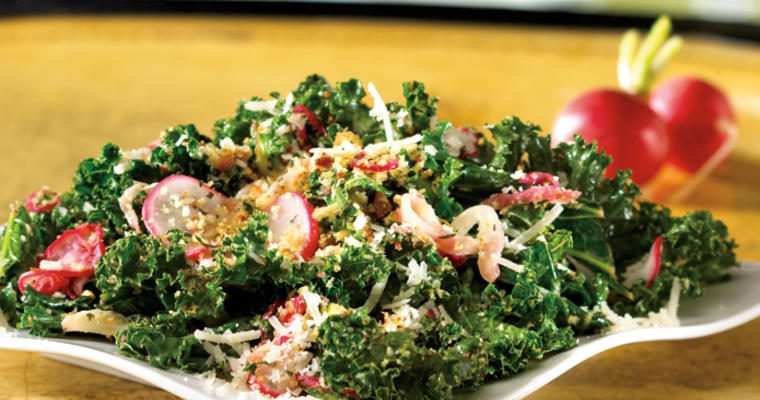The start of a new year is upon us, and so is the pledge for many of your customers to get healthy and to eat better, usually by eating less or by incorporating more “healthy” foods into their diet.
Improving your diet is one way to improve health, lower your risk factors for several diseases, and to maintain a healthy weight. A healthy diet includes a variety of foods, in moderation, that provide nutrients to your body. However, some foods have more health properties than others. If you want to help your customers start the New Year off right, try incorporating these five “power foods” into your menu.
Blueberries
Blueberries are considered anti-inflammatory since they are packed with antioxidants and phytoflavonoids. This fruit is also rich in potassium and vitamin C, which can help lower your risk of heart disease and cancer. Try incorporating a serving of blueberries with your cereal (hot or cold) and chia pudding breakfast recipes.
Kale
Kale is the new popular green leafy vegetable – and for good reason, as it’s packed full of powerful nutrients such as vitamins A, C, and K. It’s also low in calories and high in fiber, iron, and calcium. One cup of kale provides 10 percent of the recommended daily allowance for omega-3 fatty acids, and it is packed full of antioxidants. Kale can be prepared in a number of ways including eating it fresh in a salad, sautéing it, as well as adding it to soups and even smoothies.
Salmon
Salmon has always been referred to as brain food. That’s because it contains high levels of omega-3 fatty acids, specifically DHA (docosahexaenoic acid), which is the main structural fatty acid in the central nervous system and retina. Salmon is also an excellent source of lean protein which will help build and repair muscle and aid in maintaining a healthy weight. Incorporate a salmon fillet as an add-on to one of your entrée salad choices.
Yogurt
Yogurt contains probiotics (good bacteria) which can help improve digestive health and immunity. You will want to look for products that say “live and active cultures” on the label. Greek yogurt is an especially good source of protein and calcium. Try offering plain greek yogurt in place of sour cream, or enjoy it in a chia pudding recipe.
Quinoa
Not only is quinoa a great gluten-free grain option, it is a great choice for any occasion, since it offers a superior nutritional profile. This super grain sets itself apart from other grains by being a complete protein, meaning it contains all nine of the essential amino acids in adequate proportions. Since complete proteins are typically only found in animal foods, quinoa is a must-have for vegetarian and vegan diets. It also contains monounsaturated fats, which are often referred to as “good fats” and “heart-healthy” due to their ability to reduce LDL (low-density lipoprotein) cholesterol. Quinoa is rich in manganese, magnesium, iron, copper, phosphorus, various phytonutrients, and is a good source of fiber, making this grain a superb choice. Try using quinoa as a replacement for rice in grain dishes, salads and as a breading for meats.











